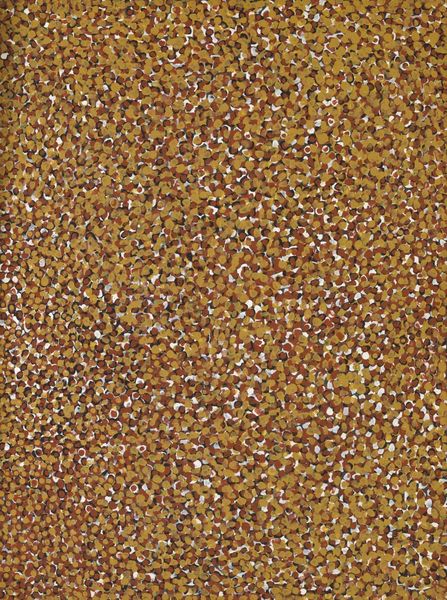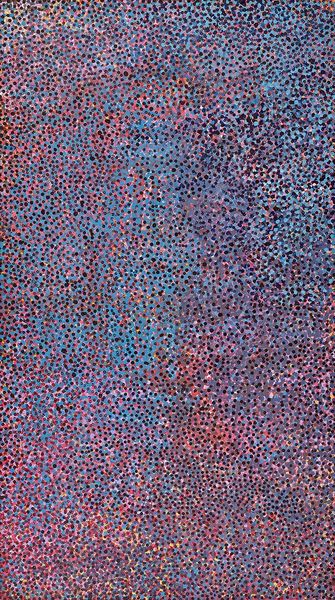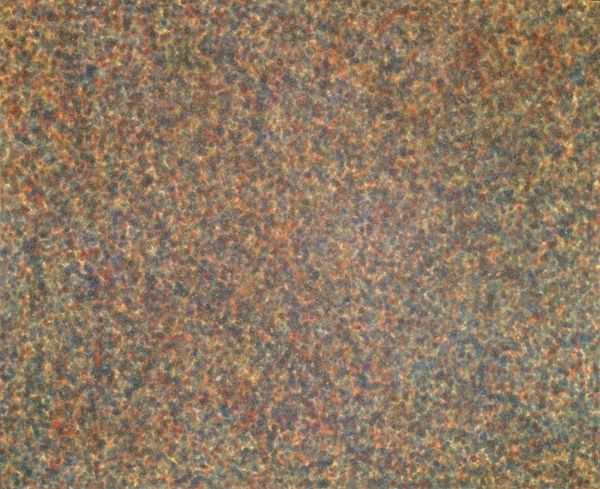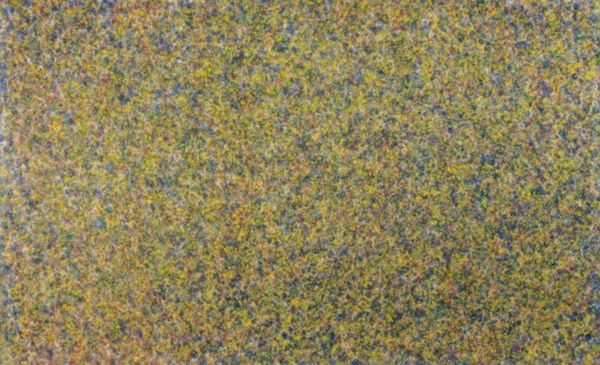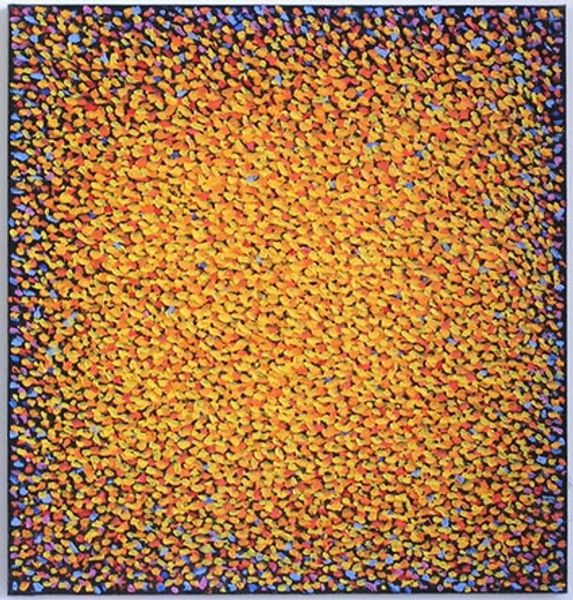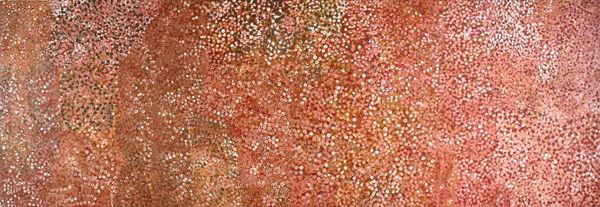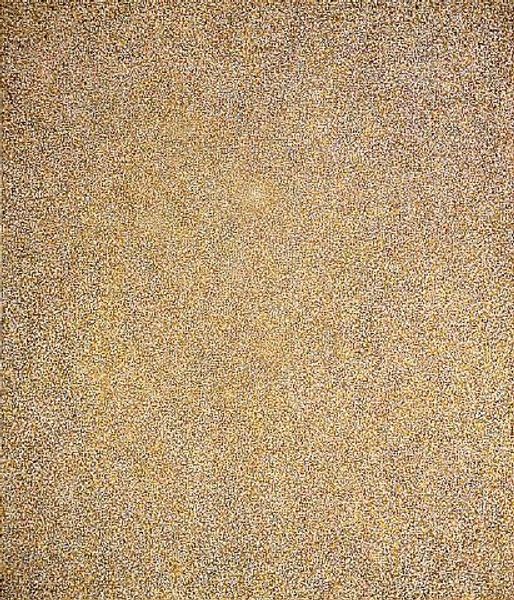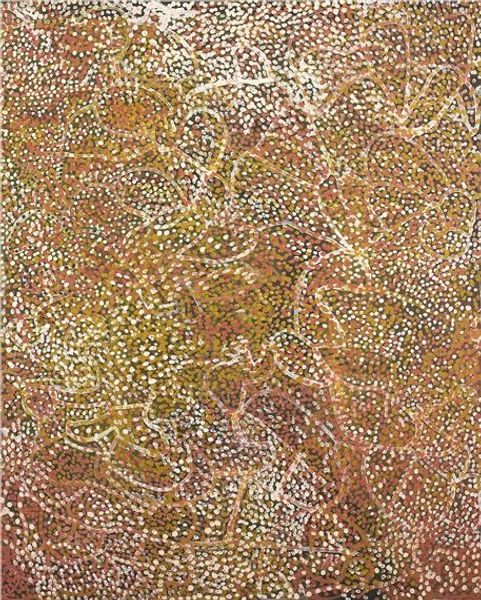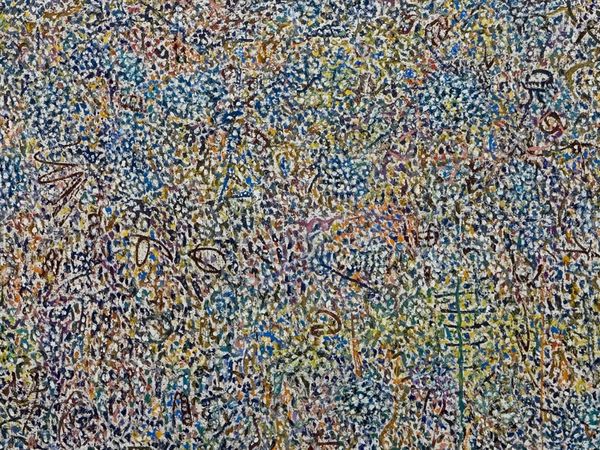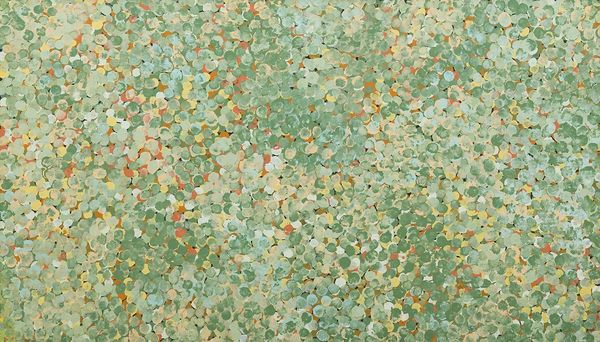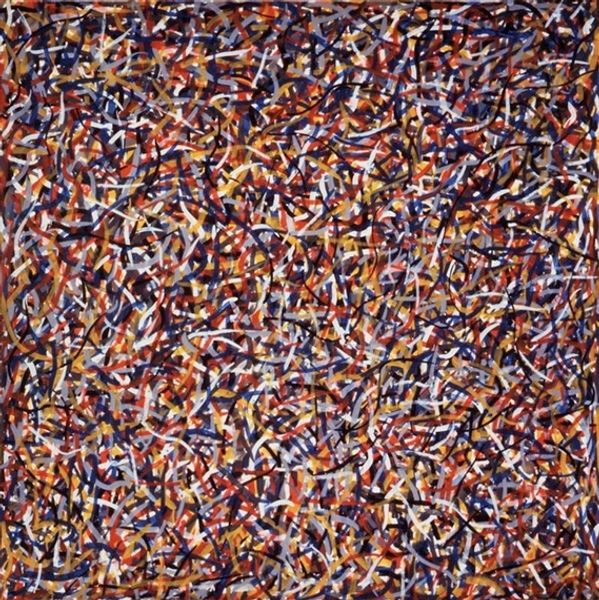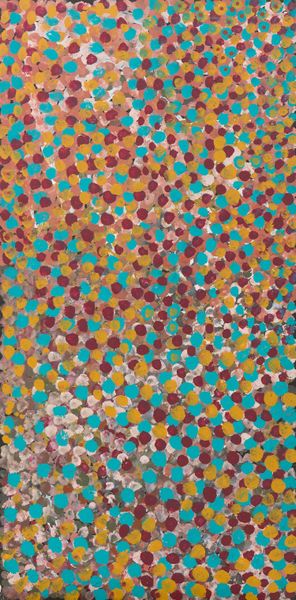
painting
#
contemporary
#
painting
#
abstraction
Copyright: Emily Kame Kngwarreye,Fair Use
Editor: This is Emily Kame Kngwarreye’s "Ndorkwa (Wild Plum)," painted in 1989 using acrylic. It feels like an all-over composition, just countless dots, but strangely compelling. What do you see in it? Curator: I see the culmination of artistic tradition re-appropriated and transformed through modern materials. Consider acrylic paint – a product of industrial chemistry – being used to depict something so intimately tied to the land, to the wild plum. It reveals a fascinating intersection of ancient knowledge and contemporary means of production. Editor: So, you're saying the material itself changes how we perceive the traditional subject matter? Curator: Exactly! The synthetic nature of acrylic, its mass-produced availability, contrasts sharply with the hand-gathered pigments of traditional Aboriginal painting. It challenges our romantic notions of authenticity. Look closer, how do you think this repetitive act of applying tiny dots reflects Kngwarreye’s labor? Editor: It must have taken incredible patience and time. Maybe the labor itself becomes a meditation, a way of connecting to the subject on a deeper level? But I wonder, does the use of acrylic somehow disconnect it from tradition? Curator: I think it's more complex than that. While some might see it as a break, I argue that it shows a powerful adaptation. The commercial accessibility of acrylic empowers Indigenous artists by providing them with a readily available medium. They’re able to share their stories with a broader audience, disrupting existing power structures within the art world. Editor: I hadn't considered that. So, it's not just about what’s represented, but also about who has access to the means of representation. Curator: Precisely. Considering materials forces us to look beyond the aesthetic surface and acknowledge the social and economic forces at play. Editor: That's given me a completely new way of understanding this piece. It's not just a beautiful painting; it's a statement about cultural survival and adaptation. Curator: Indeed. Looking closely at process reveals so much that escapes the casual observer.
Comments
No comments
Be the first to comment and join the conversation on the ultimate creative platform.
